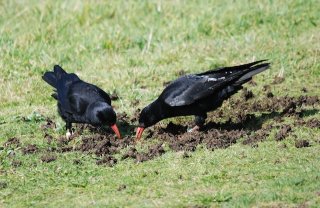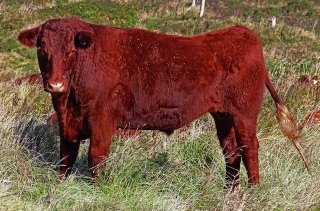 Have you ever looked really closely at a cow pat?
Photo: Anthony Miners
Have you ever looked really closely at a cow pat?
Photo: Anthony Miners
Have you ever looked really closely at a cow pat? Maybe you have cursed one after accidentally treading in it (yuk), and who stops to prod around in cow poo; most of us tend to give dung a wide berth don’t we!
But (stick with me here), there is a whole lot going on in that crusty, gooey, pooey stuff. Livestock dung can support a diverse community of invertebrates, which in turn support a varied cast of birds and mammals.
It might not be a subject for dinner table conversation, but one pat could contain hundreds of flies, beetles and their larvae and birds such as choughs, rooks, starlings, lapwings, wagtails as well as badgers, hedgehogs and shrews will all feast at these fast food joints. Birds like choughs obtain the insects by foraging directly in dung pats while others such as swallows, martins and bats take insects in the air while flying over fields containing the dung from grazing livestock.

(Photo: Anthony Miners. Fast food Lizard-style for Choughs)
All pats are not the same though – there is usually more going on in the high-rise versions than in the wide ‘splatter’ type. Taller, more fibrous pats make better places for beetles to colonise, break one open and it could be teaming with adults, larvae and pupae, whilst yellow dung flies are less choosy which type they colonise.
 |
 |
| Photo: Terry Thirlaway Chough grub. Many species of beetle are rare and care with worming treatments that contain avermectins helps to protect them. | Photo: Alec Farr Crusty or splattered, pats are home to a myriad of insect life. |
And it gets more interesting still….. the suitability of the pat for insects will depend on what worming treatments the animal has received. Products used to control worms and other parasites in cattle, ponies and sheep can contain avermectin as an active ingredient. Research has shown that after stock have been treated with avermectins, residues of that product are excreted in their dung, and these residues can persist for several weeks after treatment.

Photo: Terry Thirlaway. Cattle, like this magnificent North Devon animal are hugely important in managing coastal landscapes. Many plants on the Lizard as well as choughs depend on grazing to keep an open vegetation mosaic
Because the avermectin residues keep their insecticidal properties in the dung, exposure to these residues can adversely affect dung insects colonising individual pats (through either killing the adult insects or their larvae or impairing the adult insect’s ability to reproduce). This can dramatically reduce the number and type of insects available to birds and mammals foraging within affected dung pats. To ensure there is a good supply of insects it is important to look at how, when and with what grazing animals are treated, that way grazing animals are protected and wildlife is well fed too.
So, next time you are out on a walk, take a stick with you, look for the pats with lots of holes in them and have a good poke around to see what you can find. Poo sticks without a river in sight.
Choughs running amuck
Video:Alec Farr Choughs on the Lizard Published: Oct 2013 Author: Claire Mucklow{jcomments on}
Click here for information about bird species found on the Lizard.
